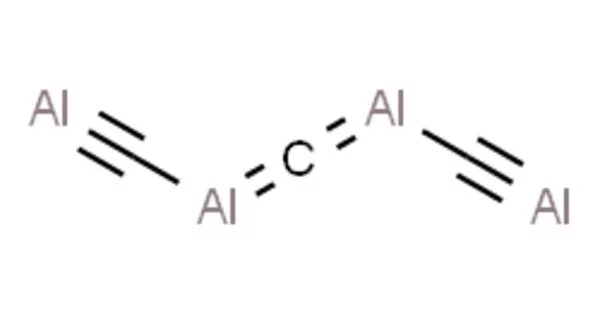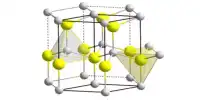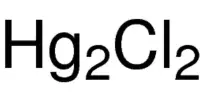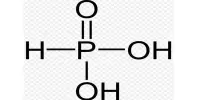Aluminum carbide (Al4C3) is a ceramic compound made up of aluminum and carbon. It is a hard, refractory material with a high melting point and excellent thermal stability. It is commonly used in high-temperature applications such as furnace linings, heat exchangers, and ceramic cutting tools. It can also be used as a raw material for the production of other aluminum compounds, such as aluminum nitride and aluminum oxide.
It is a carbide of aluminum. It has the appearance of pale yellow to brown crystals. It is stable up to 1400 °C. It decomposes in water with the production of methane.
Properties
It is extremely hard and has a high melting point, making it useful in a variety of industrial applications such as abrasives, cutting tools, and refractory materials.
- Chemical formula: Al4C3
- Molar mass: 143.95853 g/mol
- Appearance: colorless (when pure) hexagonal crystals
- Odor: odorless
- Density: 2.93 g/cm3
- Melting point: 2,200 °C (3,990 °F; 2,470 K)
- Boiling point: decomposes at 1400 °C
- Solubility in water: reacts to make natural gas
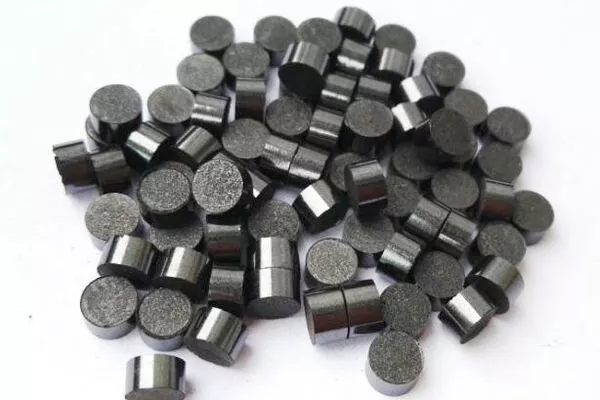
Reactions
Aluminum carbide hydrolyses with evolution of methane. The reaction proceeds at room temperature but is rapidly accelerated by heating.
Al4C3 + 12 H2O → 4 Al(OH)3 + 3 CH4
Similar reactions occur with other protic reagents:
Al4C3 + 12 HCl → 4 AlCl3 + 3 CH4
Reactive hot isostatic pressing (hipping) at ≈40 MPa of the appropriate mixtures of Ti, Al4C3 graphite, for 15 hours at 1300 °C yields predominantly single-phase samples of Ti2AlC0.5N0.5, 30 hours at 1300 °C yields predominantly single-phase samples of Ti2AlC (Titanium Aluminium Carbide).
Preparation
Aluminum carbide is prepared by direct reaction of aluminum and carbon in an electric arc furnace.
4 Al + 3 C → Al4C3
An alternative reaction begins with alumina, but it is less favorable because of generation of carbon monoxide.
2 Al2O3 + 9 C → Al4C3 + 6 CO
Silicon carbide also reacts with aluminum to yield Al4C3. This conversion limits the mechanical applications of SiC, because Al4C3 is more brittle than SiC.
4 Al + 3 SiC → Al4C3 + 3 Si
The chemical reactions between silicon carbide and molten aluminum in aluminum-matrix composites reinforced with silicon carbide produce a layer of aluminum carbide on the silicon carbide particles, which reduces the material’s strength while increasing the wettability of the SiC particles. This tendency can be reduced by coating the silicon carbide particles with a suitable oxide or nitride, preoxidizing the particles to form a silica coating, or employing a sacrificial metal layer.
Mechanical alloying can be used to create an aluminum-aluminum carbide composite material by combining aluminum powder and graphite particles.
Occurrence
Aluminum carbide is a common impurity in technical calcium carbide in trace amounts. Aluminum carbide is formed as a corrosion product of graphite electrodes in the electrolytic manufacturing of aluminum.
Aluminum carbide frequently forms as an unwanted product in metal matrix composites based on an aluminum matrix reinforced with non-metal carbides (silicon carbide, boron carbide, etc.) or carbon fibers. Carbon fiber reacts with the aluminum matrix at temperatures above 500 °C; better wetting of the fibre and inhibition of chemical reaction can be achieved by coating it with, for example, titanium boride.
Applications
Aluminum carbide particles finely dispersed in aluminum matrix lower the tendency of the material to creep, especially in combination with silicon carbide particles. It can be used as an abrasive in high-speed cutting tools. It has approximately the same hardness as topaz.
It is used in a variety of industrial applications, such as abrasives, cutting tools, and high-temperature furnace linings. It can also be used as a source of pure carbon for the production of carbon fibers and other carbon-based materials.
